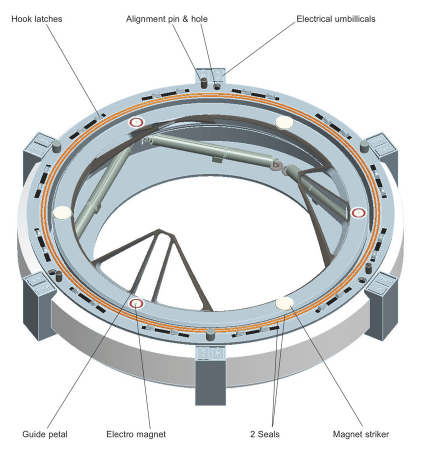 |
| June 10, 2014 | Volume 10 Issue 22 |
Designfax weekly eMagazine
Archives
Partners
Manufacturing Center
Product Spotlight
Modern Applications News
Metalworking Ideas For
Today's Job Shops
Tooling and Production
Strategies for large
metalworking plants
European Space Agency advancing universal space docking ring design
Connecting spacecraft in orbit has never been simple, but the European Space Agency (ESA) took a huge step forward recently to allow the next generation of space vehicles of all types from around the world to link up with each other more easily. The program effort is focused on building a universal docking port.
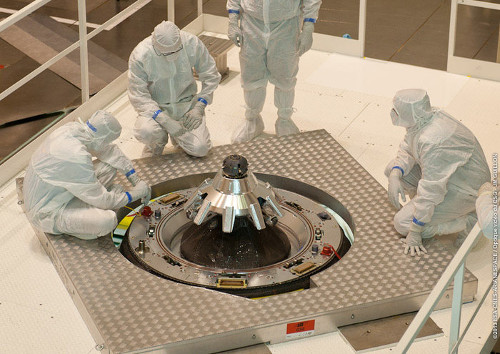
Technicians inspect the docking cone on ATV-4 (automated transfer vehicle) at Europe's spaceport in French Guiana. This craft, dubbed "Albert Einstein," linked up with the International Space Station (ISS) in June 2013. ESA engineers are looking at ways to improve the "one-way" docking mechanism of such craft. [Photo: ESA/CNES/Arianespace/Optique Video du CSG]
The International Space Station has two sets of incompatible docking ports, one designed for Russian spacecraft and Europe's space freighter, and another design for the now-retired U.S. space shuttle. There also are berthing ports for vessels that cannot dock on their own but are first captured by the Station's robotic arm.
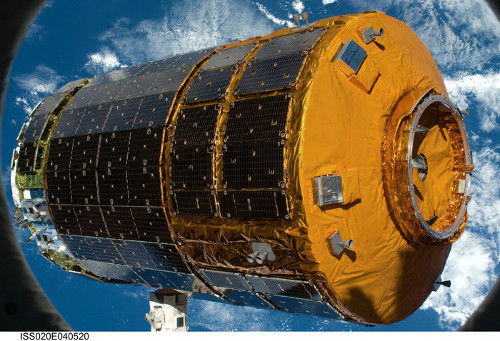
The unpiloted Japanese H-II Transfer Vehicle (HTV) is held by the International Space Station's robotic Canadarm2. NASA's Expedition 20 flight engineers used the robotic Canadarm2 to grab the cargo vessel and attach it to the Earth-facing port of the Harmony node on September 17, 2009. The berthing ring is visible at the right. [Photo: NASA]
Adding to the complexity, Russian docking ports have a male and female version, like an electrical plug and socket. This means that a spacecraft can only dock with a vehicle that has the correct receiving port.
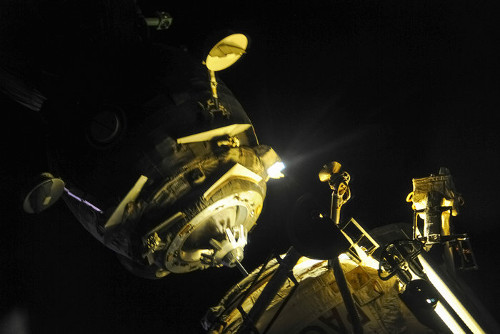
This 2014 image shows the male part of the Russian docking system on the Soyuz spacecraft, the extending rod that guides the spacecraft to a secure connection. Russian docking ports have a male and female part, like an electrical plug and socket. This means that a spacecraft can dock only with a vehicle that has the correct receiving port. [Photo: Roscosmos-O. Artemjev]
The Space Station's docking mechanisms are designed to handle large, 100-ton craft such as the space shuttle. They grasp a spacecraft as it pushes into the Space Station like a train coach connecting to its locomotive.
This approach works fine for heavier vehicles, but the next generation of spacecraft is gearing up to be smaller and up to 10 times lighter. A 10-ton vessel would simply bounce of these ports, because it does not have enough momentum to engage the locking rings.
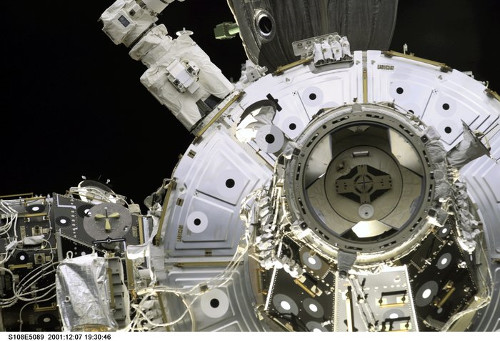
The Androgynous Peripheral Attachment System on the International Space Station designed to connect the Space Shuttle with the outpost. This image was taken from Space Shuttle Endeavour during mission STS-108 as it approached the Pressurized Mating Adapter 2. [Photo: NASA]
To overcome these limitations, a new international standard will work with a lighter generation of space vehicles and is identical for both craft -- any two vehicles can dock or be berthed.
Although the connection is defined by the international standard, the mechanism behind the docking ring can be designed in any way -- making further cooperation in space easier.
ESA's own International Berthing Docking Mechanism is the only design that will sense the forces at play between two spacecraft and adapt accordingly, "grabbing" a lighter vessel or absorbing the loads of a heavier vehicle. This androgynous system will allow two vehicles to berth and dock with each other and ensure that there is an airtight connection between both spacecraft.
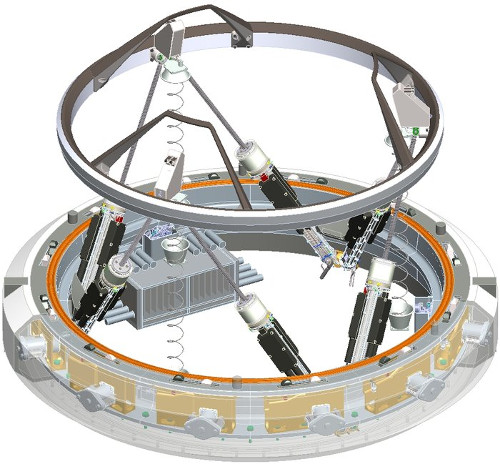
ESA's International Berthing and Docking Mechanism is the only design that senses the forces at play between two spacecraft and adapts accordingly. [Image: QinetiQ]
The first engineering model is being built by QinetiQ Space in Belgium to test the mechanisms on Earth, with a goal of having the system available for flight by 2017.
The Sierra Nevada Corporation in the United States is already investigating collaboration with ESA for its first use on Dream Chaser, a reusable spaceplane that will carry astronauts and cargo to low orbit and land like an aircraft on a runway.
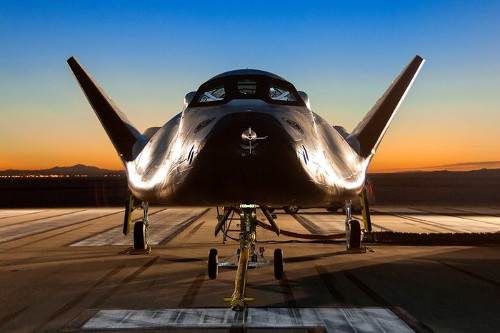
Dream Chaser is part of NASA's Commercial Crew Program to transport crew to the International Space Station and back to Earth by 2017. The spacecraft will serve as a platform for technology demonstrations, construction and repair in space, and as a platform for crewed and un-crewed scientific missions. [Photo: NASA]
The NASA Docking System (NDS) mating system supports low-approach velocity docking and provides a modular and reconfigurable standard interface, supporting crewed and autonomous vehicles during mating and assembly operations. The NDS is NASA's yet-complete implementation for the emerging International Docking System Standard (IDSS) using low-impact docking technology. All NDS configurations can mate with the configuration specified in the IDSS Interface Definition Document (IDD) released September 21, 2010. The NDS evolved from the Low Impact Docking System (LIDS).
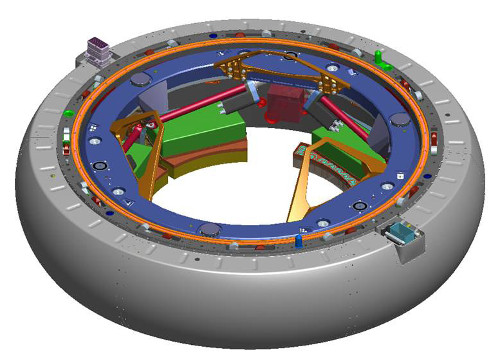
NASA Low Impact Docking System conceptual CAD model (retracted configuration). [Image: International Docking Standard]
Source: European Space Agency (ESA)
Published June 2014
Rate this article
View our terms of use and privacy policy

